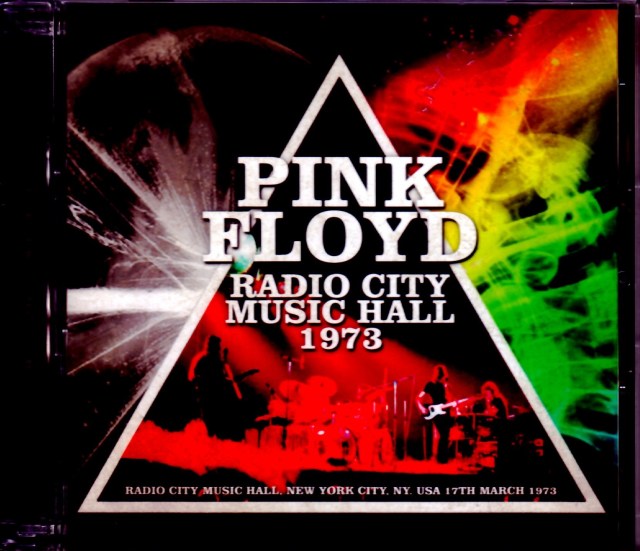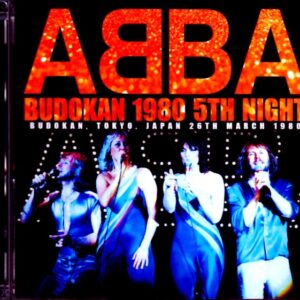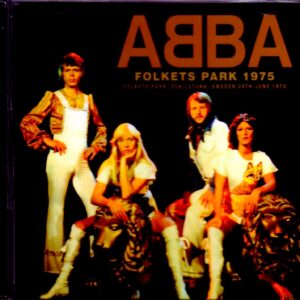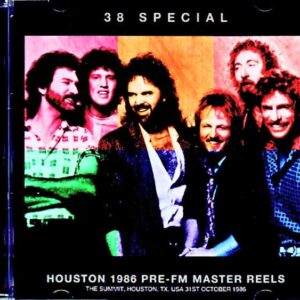Description
The 1973 New York sound source of Pink Floyd, which is a hot topic due to the release of a new source, is the fastest sound record in the world! It is an urgent release with the strongest sound quality + longest version in all scenes! This New York performance on March 17th has long been popular with fans as a representative sound source that captures the early 1973 tour. As you know, the set composition of the first half of the show was fluid at the beginning of the 1973 tour, and at the very beginning, “Echoes” was played as the opening song, which changed to “Careful With That Axe, Eugene” at the 13th performance in Boston, and from the 15th performance recorded in this work (March 17th), “Obscured By Clouds ~ When You’re In” became the opening. There is also a Waterbury speech on the following 18th (※ Various verifications have shown that it was the New York performance on the 17th in recent years), but in any case, there is no room for argument that it is an interesting period when the composition of the first half of the show, which is unique to the early 1973 tour, is not completely fixed. Interestingly, there are currently seven recordings of this day, and our shop previously released “RADIO CITY MUSIC HALL 1973”, which focuses on one of the sources (Recorder 2), and it caused a great response. The latest work that will be released this time is a different source called Recorder 4, which was released in 2018 this year, and was a source that had been known to exist among tapers for a long time as a different recording that surpassed Recorder 2 (the source used for the gift board above), which had good sound quality among the existing sound sources of the same day. Unfortunately, Recorder 4 has a fatal weakness in that it only records the middle of the show and the middle of the complete reproduction of the dark side, and because the inter-song scenes are almost cut even in the first half of the show, which is the key to listening, it seems to have been recognized as a source that is not quite decisive among other sources that meet the completeness of the recording and the good sound quality. But if we focus only on its extraordinary characteristics, that is, sound quality, Recorder 4 has a direct naked feeling that strips away three or four layers of the veil of the sound that we have become accustomed to from the existing source, and it is certainly the top of the existing sources. Moreover, since the up-converted version of the original source was suddenly released, it is no wonder that Floyd sound source fans around the world are looking forward to it. In addition, the fact that it has sound quality that can be verified in detail means that it can be said to be a source that dramatically increases the understanding of the early 1973 performance, when the configuration of the first half of the show is not fixed, so talking about the performance of this period without using this as the main sound source is like trying to determine the truth with uncertain materials. Fortunately, there are many existing sources for this performance, so there are plenty of sources that can perfectly compensate for the missing scenes of Recorder 4, so if you take a good quality source from among them, digitally restore the same part in milliseconds, and restore the show as it is in history, you should be able to dramatically increase your understanding of this day. This was made possible by the latest work, that is, Recorder 4 was used as a base, and the missing parts were rebuilt + remastered with other best sources, and it is the strongest 1973 New York performance in history, which also has the advantage of being the longest version ever!!! The high-performance sound and completeness of the scene are overwhelming from “Obscured By Clouds”, which opened the show for the first time on this day. In particular, the introduction of the song started recording about 1 minute 34 seconds earlier than the recording of the existing Recorder 2, so it is the first appearance scene that suddenly updates the recording time from the start of the disc. It is also noteworthy that the cymbal ticks (※ 1:58 ~), which were almost inaudible in Recorder 2, can be heard clearly, and the sound activity at the beginning, which aims for a drone effect with two synthesizers, has a great sound and upper feeling, and all sounds come out with a sharpness and closeness that exceeds Recorder 2. A feature of Recorder 4 in “When You’re In” is that there is a strange sound that seems to have been dropped on the recorder at around 3:12-18 (= probably the microphone direction changes and the sound becomes distant for these few seconds), but when the microphone position is returned, a sharper sound image spreads, and the metallic shine that can be said to be the core of this song attacks with the strongest sound presentation in the history of sound sources. In addition, the released source fades out at 7 minutes 27 seconds after the end of the song, but the gap from here to 9 minutes 08 seconds (※ cheering part) was also supplemented at the same position of Recorder 2 to maintain the continuity of the scene. Of course, this is an advantage only of this work that is not available in the public source. In “Set The Controls For The Heart Of The Sun”, the interlude and the scene where the synthesizer sound effect of the attention is inserted for the first time appear with an exceptionally excellent sound luster, and the clarity and clarity of the tom’s hit sound also widens the gap with the previously released sound. Also, the missing public source, which faded out just 5 seconds after the end of the song, was cross-faded at the same position on the previously released version, and Roger’s “Thank you!” and the dense tuning scene that lasts for about 1 minute 30 seconds in this section were completely restored. In “Careful With That Axe, Eugene”, Roger’s heroic figure as a bassist stands out even more. For example, the effect of him repeatedly shaking the rhythm with the octave sound removed for a while from around 3 minutes 24 seconds, and the appearance of him continuing to play a rapid riff for about a minute from just around 5 minutes appear with a clearer sound that is two or three ranks higher than before, and the rare scene of two long breaths at the end of the song also comes out with a vividness that is full of the feeling of being on the spot. And here too, the shortcoming of Recorder 4, which faded out just 3 seconds after the end of the song, was cross-faded with the same scene of Recorder 2, and the lost about 45 seconds were restored, improving the completeness of the scene. “Echoes” also has a missing scene of about 20 seconds that existed at 16 minutes and 9 seconds of the original source, but the missing scene was filled in at the same position of the previously released version by crossfading, and the scale of the song and the dynamic feeling of the rhythm are correct, and it has a clear upper feeling. The complete reproduction of the dark side was first compensated for by Recorder 2 with the beginning of the heartbeat scene of “Speak To Me” that was missing in Recorder 4 (※ from the start of the disc to around 1:50). The heartbeat SE cannot be heard for a while after 1:50, when the crossfade shifts to Recorder 4, but this is due to the difference in recording position and is definitely recorded from the same performance and the same time on the same day. By the way, there are almost no other examples of sound sources from other days in the same year that have recorded 3 minutes and 40 seconds just at the beginning of the second half of this show, and this will be a significant upgrade as a documentary in early 1973. “Time” also has a beautiful elastic wave of sound, and it is nice to hear Rick’s voice, which was difficult to understand until now, and “The Great Gig In The Sky” also develops a direct and dazzling musical radiation that cannot be felt in other sources on the same day, but unfortunately the recording is cut off around 3:17 in the middle of the performance, and Recorder 2 will be the main role from then until the end of the disc. And the rediscovery of the Recorder 2 sound from here on is also the charm of this work. Particularly noticeable is the quietness unique to Recorder 2 that floats throughout the sound image, and its resolution, which is free from hiss noise, can be said to be an appeal that even Recorder 4 cannot reach. In addition, the magnificent polyphonic harmony that can be heard at the key points of “Eclipse” will be surprised again by its sound potential that is not inferior at all. By the way, at 1:55 of “Us And Them”, which was a deficiency peculiar to Recorder 2 (probably due to a tape change), it was cross-faded to another Recorder 1 (mono recording), and this continues until 3:35 of the next song, “Any Colour You Like”. For about 4 minutes and 20 seconds in this section, you can enjoy the luxurious and high-resolution sound peculiar to Recorder 1, and the characteristic scene where the synthesizer plays out with the settings of “On The Run” (0:29-32), the sharp tone of the guitar, and the sound that comes out are ideal. In the encore “One Of These Days”, Gilmore plays a tremendous long sustain with a bottleneck technique, and the breathtaking tone extension and amplitude peculiar to Recorder 2 appear, and the final part of the song, which is unique to this day, where the whole sound descends and closes, is a sharp sound that can be placed next to you, which can be said to be unique to this latest work. Another noteworthy point about the recording sources is that the shouts and strange voices coming from around Recorder 2 at the beginning and end of each song can be heard in the distance in parts of Recorder 4, and it is also interesting to know that these two recorders were “fairly far apart, but not too far apart.” For example, a strange voice coming from nearby at 4:48 of Recorder 2 “Obscured By Clouds” can be heard at 5:54 of the same song on Recorder 4 (= Disc 1 of this work), and the firecracker burst at 1:36 of Recorder 2 “Set The Controls…” can be heard at a different distance on Recorder 4 at 1:36, and the location of each recorder becomes vaguely clear depending on how you hear it. These differences obtained from sound images with different standing positions also lead to expanding and deepening the understanding of the performance sound, which tends to be biased with only one source, so if you have a previously released title, after purchasing this work, you can not only listen to the sound quality but also measure the distance of the tone and sound, which will help you to improve your understanding of the performance of the day. And the reason why you can even discover such added value is because this is the best sound quality using the best existing source, and all scenes are recorded for the longest time. Be sure to check out this fascinating latest work, which has been fully restored and brings together the wisdom of 73 years of New York sound history! Live at Radio City Music Hall, New York City, NY. USA 17th March 1973 PERFECT SOUND(UPGRADE) Disc 1 (68:48) 1. Obscured By Clouds 2. When You’re In 7:24 – 9:08 Previously released supplement 3. Set The Controls For The Heart Of The Sun ★13:54 – Previously released supplement until the end 4. Careful With That Axe, Eugene ★0:00 – 0:02 Previously released supplement ★13:02 – 13:46 Previously released supplement 5. Echoes ★16:08 – 16:29 Previously released supplement Disc 2 (55:33) The Dark Side Of The Moon 1. Speak To Me ★0:00 – 1:50 Already released (You can’t hear the heartbeat after 1:50, but it’s definitely the same performance) 2. Breathe 3. On The Run 4. Time 5. Breathe (Reprise) 6. The Great Gig In The Sky ★3:17 and later Already released until the end of Disc 2. 7. Money 8. Us And Them 9. Any Colour You Like 10. Brain Damage 11. Eclipse Encore 12. One Of These Days






Reviews
There are no reviews yet.